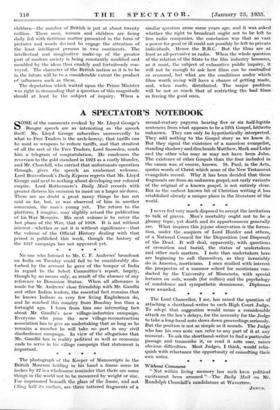The photograph of the Keeper of Manuscripts in the British
Museum holding in his hand a frame some 18 inches by 12 is a wholesome reminder that there are some things in the world not to be measured by weight or size. For imprisoned beneath the glass of the frame, and not filing half its surface, are three tattered fragments of a second-century papyrus bearing five or six half-legible sentences from what appears to be a fifth Gospel, hitherto unknown. They can only be hypothetically interpreted. They add nothing to the Gospel story as we know it. But they signal the existence of a nameless evangelist, standing shadowy and dim beside Matthew, Mark and Luke and the other who may or may not have been John. The existence of other Gospels than the four included in the canon was, of course, known. St. Paul, in the Acts, quotes words of Christ which none of the New Testament evangelists record. Why it has been decided that these fragments are from an unknown gospel, not early variants of the original of a known gospel, is not entirely clear. But as the earliest known bit of Christian writing it has established already a unique place in the literature of the world.
* * * *














































 Previous page
Previous page